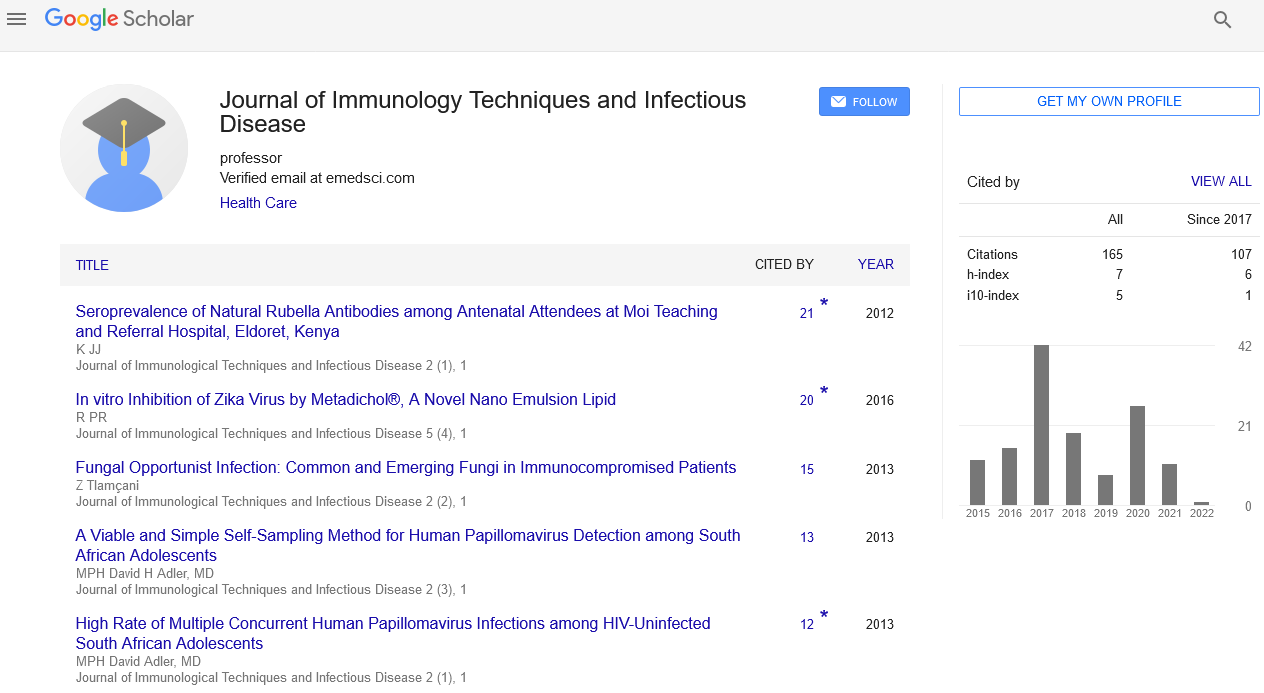Superimposed myocarditis can lead ARVD patients to acute progression to CHF
Guy Hugues Fontaine
Université Pierre et Marie Curie, France
: J Immunol Tech Infect Dis
Abstract
ARVD is one of the cause of sudden death in the young and the athlete leading to the crucial problem of indication of ICD implantation. However, the occurrence of an acute phenomenon of superimposed myocarditis may be in some cases a major problem leading to acute devastating CHF. Here, we report such a case in whom the clinical course was illustrated by release of troponin and progressive decrease in LVEF and finally heart transplant confirming the diagnosis of ARVD but also showing a typical involvement of both ventricles by histological signs of myocarditis. A male teenager with negative family history presented one episode of palpitation after a game of soccer. Four months later, he had a documented episode of VT with LBBB. Echo showed major dilatation of right atrium associated with RV dilatation, LV size and function were normal. SAECG was positive and contrast angiographies were typical of ARVD. VT was not inducible at EPS but a TdP-like pattern followed by LBBB VT was observed after Isoproterenol injection. CMR confirmed RV dilatation and thinness of the free wall, also diffuse RV hypersignal. Some days later the patient had chest pain, increase in troponin level and T waves changes in inferior leads. Viral test was positive for para-Influenzas III. Two months later Frequent PVCs. Three months later non-sustained episodes of VT. Same positive viral testing. FEVG was 57%. Abrupt change in disease progression was observed three months later. Severe VT occurred during exercise necessitating DC Shock. Major Increase in Troponin level reached 120 ng/ml. ICD was implanted. After nine months multiple episodes of VT: LBBB + superior axis was associated with sign of RV failure. Major dilatation of RV and decrease in LVEF 45% occurred as well as signs of hepatic dysfunction. Few months later, CHF was associated with LVEF 25%. Clots in the LV were observed with probable coronary emboli. Successful heart transplantation was performed. Pathology showed in RV evidence of typical ARVD with clusters of lymphocytes. The same pattern was observed in the LV with multiple foci of lymphocytes, associated with areas of myocardial necrosis. This case illustrates the recent work of Lopez-Ayala (HR 2016) confirming the suggested association of ARVD with myocarditis which can be based on the same genetic factor not available in our old case (Dr F Roland, Medical Thesis, University of Toulouse 2002).
Biography
G H Fontaine has made 15 original contributions at the inception of cardiac pacemakers in the mid-60s. He has identified ARVD as a side work during the beginning of antiarrhythmic surgery in the late 70s. He has published more than 860 scientific papers including 197 book chapters. He was the Reviewer of 17 journals both in clinical and basic Science. He has also served for 5 years as a Member of the Editorial Board of Circulation. He has been invited to give 11 Master’s lectures of 90 minutes each during three weeks in the top universities of China (2014).
 Spanish
Spanish  Chinese
Chinese  Russian
Russian  German
German  French
French  Japanese
Japanese  Portuguese
Portuguese  Hindi
Hindi 
